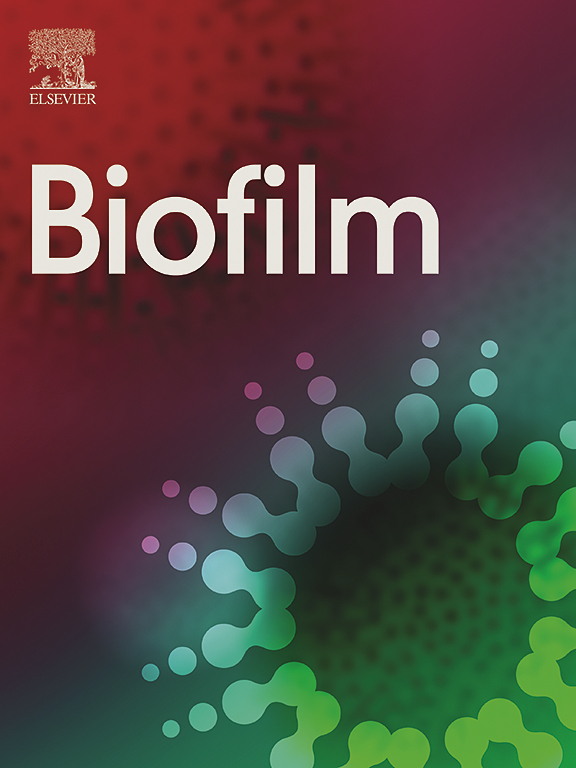From adhesion to biofilms formation and resilience: Exploring the impact of silver nanoparticles-based biomaterials on Pseudomonas aeruginosa
IF 4.9
Q1 MICROBIOLOGY
引用次数: 0
Abstract
Colonization of medical devices by microorganisms, often progressing to the formation of resilient biofilms, presents a common clinical issue. To address this challenge, there is growing interest in developing novel biomaterials with antimicrobial/antibiofilm properties as a promising preventive measure. This study explores nanocomposite biomaterials based on silver nanoparticles (AgNPs) deposited on thin silica (SiO2) layers for their potential effect on the adhesion, detachment, viability and biofilm formation of the opportunistic Pseudomonas aeruginosa. The AgNPs-based biointerface effect on biofilm development is investigated on the PAO1-Tn7-gfp strain by combining experiments under static and dynamic conditions. For the latter, a shear-stress flow chamber is used to mimic conditions encountered around certain medical devices. The findings reveal a rapid bactericidal effect of the AgNPs, noticeable within 30 min of exposure. Moreover, a delay in surface colonization is observed with a thin and unstructured biofilm, even after 72h of dynamic culture. A considerable fragility and sensitivity to hydrodynamic stresses is noticed for this loosely attached bacterial monolayer when compared with the thick and resilient biofilm formed on SiO2 surface. This study underlines the potential of AgNPs-based biomaterials in the conception of novel antimicrobial/antibiofilm surfaces with controlled release of the biocidal agent.
从粘附到生物膜的形成和弹性:探索纳米银基生物材料对铜绿假单胞菌的影响
微生物在医疗器械上的定植,往往会形成有弹性的生物膜,这是一个常见的临床问题。为了应对这一挑战,人们越来越关注开发具有抗菌/抗生物膜特性的新型生物材料,将其作为一种有前途的预防措施。本研究探讨了基于沉积在二氧化硅(SiO2)薄层上的银纳米粒子(AgNPs)的纳米复合生物材料对机会性铜绿假单胞菌的粘附、分离、存活和生物膜形成的潜在影响。通过结合静态和动态条件下的实验,研究了基于 AgNPs 的生物界面对 PAO1-Tn7-gfp 菌株生物膜形成的影响。在动态条件下,使用了剪切应力流室来模拟某些医疗设备周围的条件。研究结果表明,AgNPs 具有快速杀菌作用,在接触后 30 分钟内就能明显感觉到。此外,即使经过 72 小时的动态培养,也能观察到薄而无结构的生物膜表面定殖延迟。与二氧化硅表面形成的厚而有弹性的生物膜相比,这种松散附着的细菌单层对流体动力应力相当脆弱和敏感。这项研究强调了基于 AgNPs 的生物材料在设计新型抗菌/抗生物膜表面方面的潜力,这种表面可控制杀菌剂的释放。
本文章由计算机程序翻译,如有差异,请以英文原文为准。
求助全文
约1分钟内获得全文
求助全文

 求助内容:
求助内容: 应助结果提醒方式:
应助结果提醒方式:


